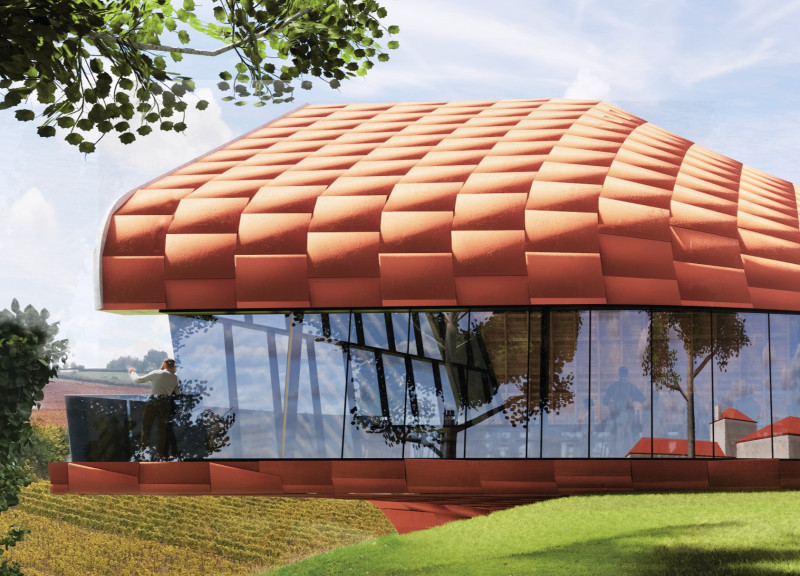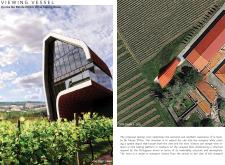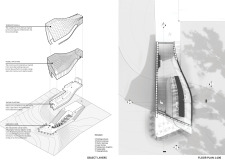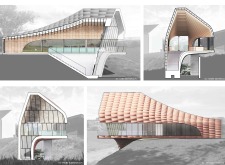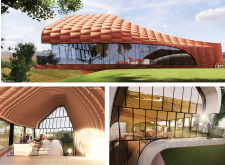5 key facts about this project
The structure utilizes a material palette that emphasizes locality and sustainability. Notable materials include terracotta shingles, which are not only visually appealing but also provide durability against regional weather. Glass comprises a significant portion of the design, allowing natural light to permeate the interior while offering expansive views of the vineyard. Concrete is employed in the structural framework, providing essential support and strength to the overall design.
The architectural design emphasizes fluidity and connection to the surrounding landscape. The form of the building resembles a vessel, intended to evoke the experience of both wine tasting and the natural flow of the vineyard. This approach effectively extends the usability of the space by encouraging visitors to interact with both the building and the environment. The layering of spaces includes tasting platforms, a communal bar area, and direct access to the vineyard, enhancing function while maintaining a strong visual relationship with the outside.
Unique elements distinguish this project from similar facilities. The terracotta shingles create a modern yet culturally resonant appearance, drawing on traditional local practices while embracing contemporary architecture. The use of glass ensures minimal disruption of views, allowing guests to fully engage with the agricultural landscape. Additionally, the structure is designed with multifunctionality in mind, adapting to both small group tastings and larger events, facilitating diverse visitor experiences.
The architectural plans reflect an innovative use of natural light and sightlines, allowing for a continual interaction between the interior and exterior spaces. Architectural sections reveal how the design prioritizes both aesthetic harmony and structural efficiency, showcasing an integration of design principles that serve both environmental and functional criteria. For those interested in deeper insights into the architectural ideas behind this project, exploring the architectural plans, sections, and designs will provide valuable understanding of its execution.


